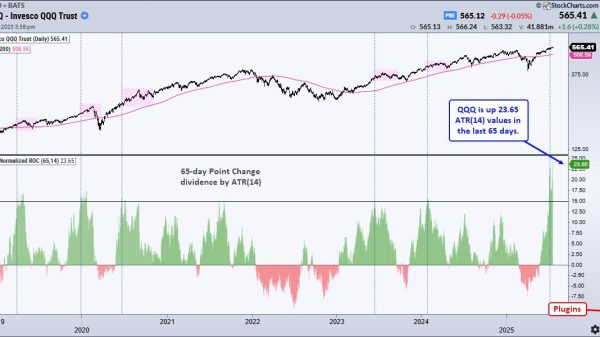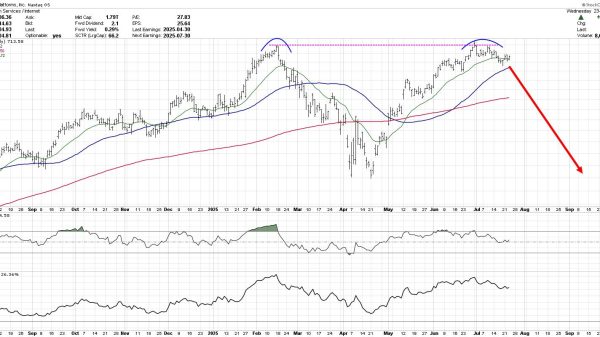As the administrator of the Environmental Protection Agency (EPA) from 2018-2021, I unveiled a bold plan to responsibly phase out testing on dogs, rabbits and other mammals by 2035 in favor of far more effective, cost-efficient and humane non-animal methods to assess chemical safety.
I also directed the agency to retire healthy animals no longer needed for research. I’m disheartened that the Biden administration has undone some of this important work to spare animals, save tax dollars and protect public health.
Scientists widely acknowledge that animal testing poorly translates to humans. Studies show that alternative test methods such as computer models and organs-on-chips are faster and more precise at predicting human outcomes, less expensive — and obviously more animal-friendly.
In 2007, the National Academies reported that animal testing was not an efficient or effective way to screen chemicals and that these modern technologies were the future.
Unfortunately, despite the many ethical, economic, environmental and human health benefits of moving away from animal testing, the old-fashioned and inefficient practice has become entrenched in the fabric of science, at a cost of billions each year to taxpayers and industry.
But times are changing — and so is science. Although the wheels of government are best known for turning slowly, if at all, I know from personal experience that federal agencies are indeed capable of rapid, far-reaching change with a little kickstart.
Consider the EPA from 2012 to 2018. Its efforts to cut animal testing spared over 200,000 animals from cruel experiments and saved over $300 million in unnecessary research costs. When I took office, it was estimated that as many as 20,000 animals each year were still being used in the agency’s in-house tests, and millions more animals were being killed by industry to fulfill outmoded EPA testing requirements.
In these tests, beagle puppies and other animals are forced to breathe or ingest chemical doses hundreds of times higher than real-life human exposures, sometimes for months on end, causing pain and death.
As administrator, I was now in a position to take bold action to tackle this problem.
In September 2019, I signed a directive to curb animal testing across the EPA. My tiered strategy called for reducing mammalian studies funded and required by the EPA by 30% by 2025, and eliminating them in their entirety by 2035.
After 2035, any new animal test would require the administrator’s approval on a case-by-case basis. I’m proud that we were the first federal agency in American history to set a hard deadline for the responsible phase-out of wasteful animal tests. By the end of my tenure, we were already making progress.
I also provided funding to five universities working on new, animal-friendly testing methodologies. Our plan included hosting annual conferences on the state of non-animal testing methods, working to reform archaic testing regulations to allow the use of alternatives, and to develop transparency and accountability metrics to track progress towards our 2035 goal.
But times are changing — and so is science. Although the wheels of government are best known for turning slowly, if at all, I know from personal experience that federal agencies are indeed capable of rapid, far-reaching change with a little kickstart.
It is typical for animals used in experiments to be killed at the end, even when they are healthy. This is cruel, unnecessary, and wasteful. So, on my final day in office, I pardoned bunny rabbits who had been used in EPA studies but were adoptable.
Unfortunately, records obtained by the nonprofit White Coat Waste Project (where I am a volunteer adviser) show how the Biden administration has eliminated the 2025 and 2035 benchmarks I set for reducing animal tests and abandoned any commitment to fully ending them. This removes all accountability from the process and means animal testing could go on forever.
Records also show that instead of retiring the rabbits from the EPA’s research lab as I directed when I was in charge, the EPA has refused to release a single one and still plans to kill these healthy bunnies when they’re no longer useful. Some of the rabbits have spent over a decade there.
The Biden administration’s decision to lean into animal testing is at odds with public opinion and good science. But it’s not completely surprising. Scientists who are only familiar with animal experiments will continue performing them and funding proposals involving animals because they are familiar, not because they are superior.
It may surprise some people that environmental groups were also angry at my plan and have continued to try and dismantle it and lobby for more, not less, animal testing. Earlier this year, the National Resources Defense Council and dozens of other groups specifically demanded that the EPA, ‘Fully and unambiguously rescind the 2019 directive of former Administrator Wheeler to eliminate rodent testing’ and requested that the EPA promise to do more animal testing.
The choice is not between ‘doing animal tests’ and ‘doing nothing.’ As next-generation testing methods such as organs-on-chips prove, the decision is between maintaining the status quo and challenging it.
I pushed the EPA to challenge the status quo because animal testing is expensive and doesn’t work very well, new technologies are available, and they will only get better and more advanced as time passes, just as all technology does.
In September 2019, I signed a directive to curb animal testing across the EPA. My tiered strategy called for reducing mammalian studies funded and required by the EPA by 30% by 2025, and eliminating them in their entirety by 2035.
If the administration won’t pursue progress on its own, Congress has also shown that it is capable of great bipartisanship when it comes to combating government animal testing.
For years, the White Coat Waste Project has successfully united Republicans and Democrats to support efforts to reduce test on dogs, cats and other animals at the EPA, Department of Veterans Affairs, National Institutes of Health, and other federal agencies.
The Biden administration is going to be on the wrong side of animal testing history. With the political will to do so, we can eliminate cruel and wasteful EPA animal testing within a generation. When we finally do, the only question will be: what took you so long?























